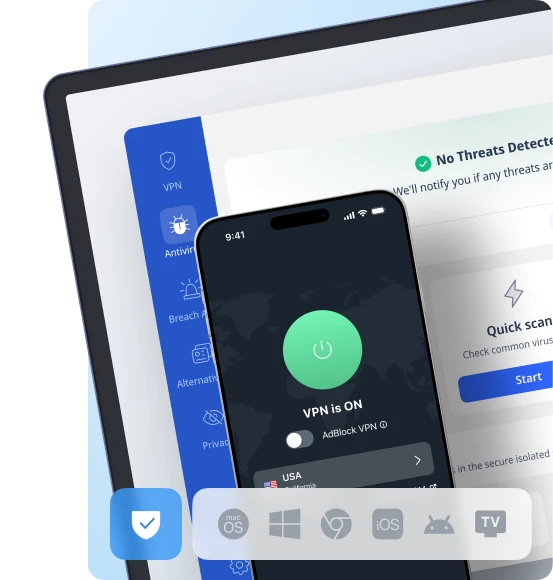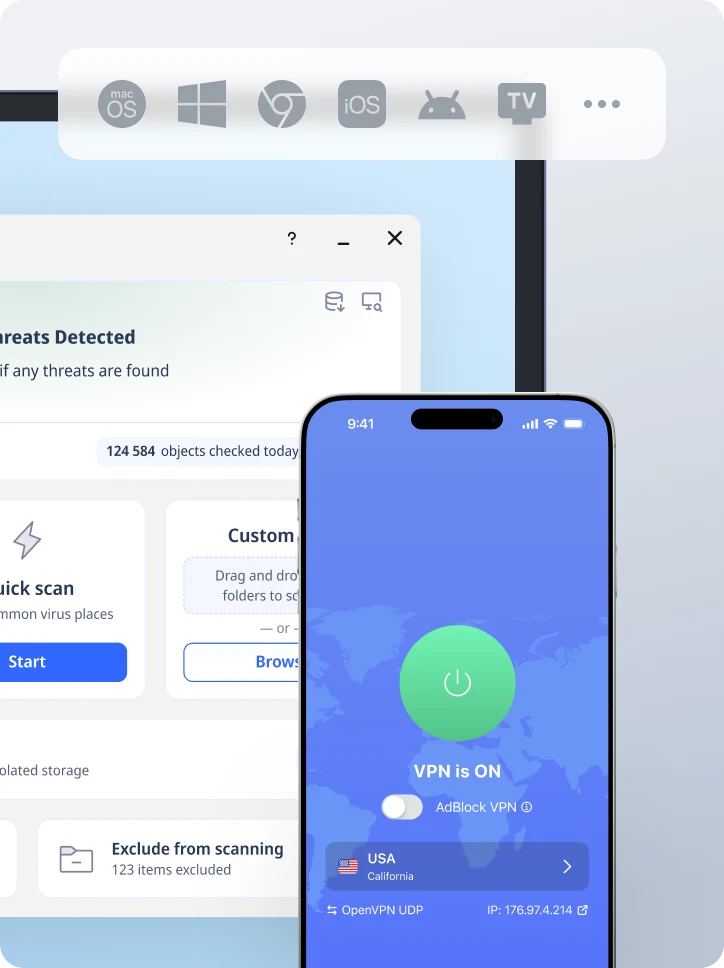How To Prevent Cyberbullying: A Practical Guide for Parents, Teens, and Schools
The Internet opens the door to creativity, learning, and connection, but it can also become a space where harmful behavior thrives. One of the most troubling issues in this digital age is cyberbullying, a form of bullying that occurs online. From cruel messages to public shaming, it affects people of all ages, and many children and teens have been cyberbullied, highlighting its widespread prevalence.
While schools and parents work to raise awareness, it’s also crucial to equip individuals, especially youth, with the tools and knowledge to stay safe online.

Protect your digital space with VeePN
There is one crucial step that you can take to protect your online life before we proceed to prevention strategies. Social media applications can be deliberately addictive and can put the users at risk of cyberbullying. VeePN is a potent privacy instrument which encrypts your internet connection and conceals your IP address and keeps you out of tracking. Surfing, chatting, or uploading social media apps, VeePN will put you in the position to secure your identity against cyberbullies, stalkers, or other online bullies. VeePN protects your online environment by making it more difficult to attack with advanced encryption and No Logs policy.
As much as you post on the web, be careful because cyberbullies may target your posts and this can affect your privacy and reputation.So now, we can take a look at prevention of cyberbullying and how to make the internet a safer place all round.
Understand what cyberbullying looks like
The initial prevention step is by identifying the signs. Cyberbullying may be executed in various forms, and not all of them are evident at the first glance.
👹Threatening or abusive messages: These could appear in the texting, texts, DMs, emails or in public comments.
👹Rumormongering on the Internet: Such rumors could be false information or doctored photos to humiliate or ostracize a person.
👹Impersonation: A bully may impersonate or create a fake account to bully or demean other people using another name.
👹Being blocked in group chats or online games: Another bullying tactic is digital isolation, at least when it comes to teens.
👹Public shaming or doxxing: Posting personal information, personal photos or screenshots with them can have severe consequences on reputation or psychological well-being.
The consequences of such actions are very dangerous as they include the emotional damage, invasion of privacy, and loss of well-being and reputation of a person.
The clearer you are on the signs, the sooner you will be able to act, both on behalf of yourself or your child, or someone you know.
Identifying warning signs
The early detection of the cues of cyberbullying can be the key to keeping the children unharmed in the long term. Parents and caregivers ought to be keen on the behavior change of a child, including development of anxiety, depression, or mood swings. Other red flags may involve avoiding socialization or withdrawal, shying away from social media, or being secretive online.
On some occasions, children can spend a lot more, or a lot less, time on the internet, or they can get weird, or distressing messages. Organizational resources such as fact sheets provided by the Cyberbullying Research Center can be helpful in informing one about what to watch out for and how to react. Staying mindful of these warning signs and intervening early, parents and caregivers can ensure children do not have to suffer the adverse effects of cyberbullying and can help them overcome the consequences.
Understanding the impact of cyberbullying
Cyberbullying can have a serious effect on the mental state of a child, self-esteem and how happy a child feels. According to the Cyberbullying Research Center, in order to prevent cyberbullying, it is insufficient to react to events, but a community response in the process of preventing such behavior should be proactive.
It is notable that both parents, teachers, and caregivers must play their roles towards a secure online world of their children. It means staying alert through monitoring social media profiles, creating strong privacy measures on the social networking websites, and speaking out against online bullying and abusive acts.
Education: children most of the time are not aware of what cyberbullying is and they are not alone. Therefore, knowing what not to do and being informed that the help is there, they are more ready to protect themselves and other people. The communication and cooperation will help us to stop cyber bullying and save children educating each other about cyber bullying risks.
Educate early and often
The best defense is open communication. As a parent, teacher, or even a teenager, education is one of the most significant factors in preventing cyberbullying as it forms the capacity of teens to detect and stop cyberbullying.
☝️Bring the talk home: Educate children on empathy, Internet courtesy and the role of thinking before sharing.
☝️Talk about online boundaries: This should be clear and explained about what kind of behaviour is not allowed both by other people and by oneself.
☝️Role-play: Discuss potential scenarios of cyberbullying and practice how to react to them without risk. These activities aid in devising the approaches to reacting to cyberbullying.
☝️Share reporting tools: Educate children and adolescents about reporting harmful conduct on services such as Instagram, Snapchat, Discord, or Tik-Tok. Remind them not to open suspicious links that they get from strangers.
Early digital literacy makes young people less afraid and more ready to respond to toxic online behavior.
Set privacy controls and limits
Prevention also refers to restriction of access to bullies. The majority of platforms enable you to regulate the people that can communicate with you and it is prudent to make maximum use of it.
✅Keep the profile closed: Close social media accounts to authorized friends or followers.
✅Strong passwords and no sharing: keep accounts secure by using strong, unique passwords that you do not share with other people. Periodical change of passwords to be secure.
✅Activate blocking options: Block or silence harassers, spammers, and persons who send negative messages.
✅Time off the screen: Promote good power downs and breaks to prevent burnout and emotional exhaustion.
✅Check friend lists frequently: Most children do not realize that they have accepted follow requests by random people or even impersonators.
Periodically, change your privacy settings on social sites such as Facebook so that your information remains secure.
Combining them with a VPN such as VeePN will increase your security since your IP address will be concealed, and online trackers or possible bullies will not be able to track your activity or location.
Encourage reporting and support
Victims of cyberbullying often stay silent out of fear or shame. That’s why it’s so important to create a safe environment for speaking up.
👍Never dismiss their experience: If a child or teen opens up about online harassment, take it seriously, no matter how small it may seem.
👍Know where to report: Most schools have anti-bullying policies. Social platforms and apps also have reporting systems in place.
👍Collect evidence: Save messages, screenshots, usernames, and time stamps. These details can help when reporting to school staff, social platforms, or even law enforcement. In severe or ongoing cases, this evidence may need to be shared with the police.
👍Check in regularly: Emotional support is key. Victims of cyberbullying may need professional help or counseling to rebuild self-confidence.
Support systems should always be judgment-free zones where young people feel protected and understood. For more detailed guidance on reporting and support, read our dedicated article on cyberbullying prevention.
Taking action to stop online abuse
Online abuse prevention starts with proactiveness and correct utilization of resources. Reduction of cyberbullying should also be carried out by caregivers and parents through regular discussions with children by educating them on Internet safety, risks of cyberbullying and how to report and act in case they encounter online bullying.
The setup of privacy control on social media accounts, monitoring of the internet and knowledge on how to report abusive behavior are also important steps. The work of schools and teachers is rather significant, as the creation of prevention programs, the work of the providers of the counseling services, and the establishment of the culture of respect and support are also crucial.
You can easily locate a great number of useful resources that comprise videos, articles and even specific websites that offer tips and information on how to avoid cyberbullying and how to report on online abuse. By working together, staying up-to-date and acting now to eradicate risky scenarios, we can protect kids and teens, make them behave positively on the Internet and create a better and friendlier online society.
Promote kindness and community
Although prevention measures are crucial, it is also vital to have a culture of kindness. Digital spaces are what we create them to be- and spreading positivity can have a mass ripple effect.
♥️Set a good example: As a parent, teacher, or peer, be a good example. Make a comment with kindness. Pay attention to the tone, and do not forget that you should not turn into a cyberbully by setting an example of positive online communication all the time.
♥️Embrace diversity: Ensure that communities on the Internet are accommodative and tolerant of various backgrounds and views.
♥️Speak up: When you witness bullying, tell someone, and tell the victim they are not alone.
♥️Go social: positive challenge, gratitude post, or encouraging messages can offset the negativity on social media.
Cyberbullying works in secrecy and indifference. When you see a person who has lost interest in an activity or hobby that he or she used to enjoy, it is a possible indication that the person is under the influence of cyberbullying. However, when kindness becomes a rule, the bullies lose their strength.
Why VeePN is a smart tool for cyberbullying prevention
The cyberbullies can be lurking behind the screen and exploit the privacy loophole. This is why VeePN may help an individual a great deal as regards digital safety. Here’s how:
🛡️IP masking: VeePN conceals your actual IP address to prevent bullies or hackers from knowing where you are and what device you use.
🛡️AES 256-bit encryption: It is a military-grade encryption that guards all your internet traffic against monitoring, interception, or data leak.
🛡️Kill Switch: In case your VPN suddenly drops, the kill switch kills all internet connection until it is safely reconnected again, thus your data never leaks.
🛡️No Logs policy: VeePN does not keep a record of what you do, which makes your browsing experience truly anonymous.
🛡️Device protection: Connect to VeePN no matter whether you are using your phone, tablet, or laptop, just one subscription will keep you safe on all of them.
Your online identity becomes secured with VeePN — this way you or your child will be less likely to attract unwanted attention, be harassed and followed.
Final thoughts
Cyberbullying is not something we can rid ourselves of in a day, but it can be done with the right resources, education, and support so we can create safer virtual spaces. Begin with open dialogues, tighten up on your privacy, and enable young users to speak out. And never forget to protect your online life by using a reliable VPN such as VeePN.
Get VeePN today and have a 30-day money-back guarantee!
VeePN is freedom
Download VeePN Client for All Platforms
Enjoy a smooth VPN experience anywhere, anytime. No matter the device you have — phone or laptop, tablet or router — VeePN’s next-gen data protection and ultra-fast speeds will cover all of them.
Download for PC Download for Mac IOS and Android App
IOS and Android App
Want secure browsing while reading this?
See the difference for yourself - Try VeePN PRO for 3-days for $1, no risk, no pressure.
Start My $1 TrialThen VeePN PRO 1-year plan






